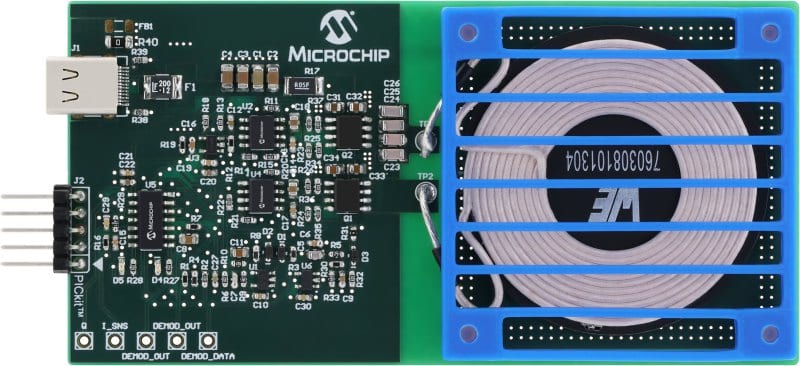The Qi Wireless 5W Charging Transmitter design offers a 70% efficiency rating and is compatible with any phone charger capable of delivering a minimum current of 2A.

Qi charging, endorsed by the Wireless Power Consortium (WPC), is the prevailing standard for wireless power transfer. Frequently used handheld devices, like smartphones, often face early connector and mechanical failures due to frequent cable plugging. Wireless charging offers tangible comfort benefits, allowing phones to be left on charging pads for extended periods and used conveniently at any time. Microchip has launched a Qi Wireless 5W Charging Transmitter Basic Power Profile (BPP) Reference Design to simplify the design process. The reference design includes a transmitter and two types of receivers (linear and switching). The system boasts an overall efficiency exceeding 70% and offers full Li-Ion charging algorithm support. It can be easily customized to accommodate various chemistries. The design is powered by a 5V supply from a USB-C connector, allowing it to be easily compatible with any phone charger capable of delivering a minimum current of 2A.
The transmitter circuit is made up of a minimal component count, consisting of a PIC16F microcontroller, two MOSFET drivers, and three operational amplifiers. The firmware on an 8-bit microcontroller implements the Qi protocol, specific state machines, and control loops. The wireless charging transmitter operates within a 5W power limit, achieving a transfer efficiency of 70% or higher. The design incorporates efficiency-based Foreign Object Detection (FOD) mechanisms to prevent unintended charging and ensure safe operation. The efficiency-based FOD trigger threshold scales proportionally with the transmitter power. The operating frequency ranges from 110kHz to 205kHz. The transmitter design incorporates voltage and current protections for the resonant tank, safeguarding the components during operation.
The reference design features a user interface connected via a universal asynchronous receiver transmitter (UART), allowing seamless communication. The interface displays crucial parameters such as voltage, current, transfer efficiency, transmitter/receiver power levels, and error flags, providing users with real-time information. Additionally, it enables parameter tracking and offers graphical representations of the data for enhanced visualization. The design also allows for configurable receiver detection and protection trigger thresholds, empowering users to customize the settings according to their needs. Furthermore, the FOD trigger thresholds can be adjusted to suit individual preferences, providing flexibility in managing foreign object detection.
This reference design has been tested by Microchip. It comes with a Bill of Material (BOM), schematics, Printed circuit board (PCB) layout, etc. You can find additional data about the reference design on the company’s website. To read more about this reference design, click here.







